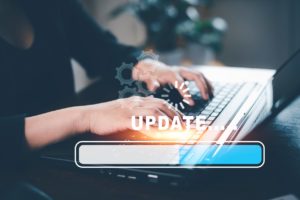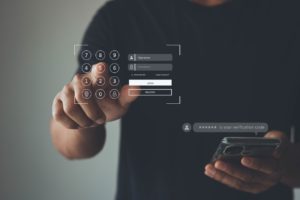If there is one piece of advice that IT pros can give to professionals and business managers, it’s to update. Update your computers, phones and tablets. Update your web server, your software tech stack, and your cybersecurity defenses. Update your operating system, your drivers, and even your printers and routers. Why? Because updates are released for very good reasons.
Outdated technology isn’t just clunky, it’s also dangerous. Hackers thrive on unchanged default settings and known security gaps. So, even if your software and devices are working perfectly, it’s vital to keep up with regular performance and security updates.
What Is an Update?
An update is when new software is released that improves your current technology. Sometimes, an update fixes a previous problem. Sometimes, an update may add new functionality, or expand the software to integrate better with other programs. Updates come in all sizes and purposes. Let’s look at a few examples of updates that are easy to understand.
Adobe, for example, often releases a new edition and most users will update to get better features or the fix to a previous flaw. Windows 11 is an update from Windows 10. If you get a cool new web camera or microphone, you might need to install the latest drivers to use them -and this, too, is an update.
Why Should You Update?
Many people don’t see the point of updating if your programs and devices work well already. However, updating offers both a myriad of benefits and plays an important role in risk prevention.
If your devices or software go out-of-date, they will stop performing at their best, may lose support from the developer, and lose integration other technology. Worse, the older any technology is, the more time hackers have had to identify vulnerabilities. The latest updates often include security patches that close known vulnerabilities and decrease your chances of getting hacked. Likewise, not updating your software is like leaving the backdoor unlocked when you know there’s a thief in the neighborhood.
One of the biggest recent threats that updates can help protect you from is malvertising – or infected ads on legitimate sites. If your device, firewall, and virus scanner are up to date, malvertising is far less likely to affect your computer.
What Should Be Updated?
Updating happens at almost every level of device technology. You should occasionally update the operating system of each device and computer you use, and check for updates of hardware, firmware, and drivers.
Every program you use should be updated regularly, and so should the devices themselves. Update your programs, the browsers you use, and your defense software. Update the operating systems on your phones, tablets, computers, laptops, servers, and even often-forgotten hardware like your router and printer.
How Do You Update?
Updating will have a standard procedure for every device and program, and that process is usually quite simple. Every computer, phone, and tablet operating system has a simple OS updating system that will check for, download, and install updates on a schedule or on command.
Navigate to the Apps section of your settings. From there, you can check for, download, and install updates for individual apps and programs.
Your web browsers will often ask to update themselves, and this is also true for many cloud platform programs.
To update your drivers, you will often need to download the latest driver and install it through your Device Manager menu. This may also be true of some software.
To update more complex software, there may be a plugin or update manager found through the internal dashboards. In almost all cases, updates and patching have been made easy, and the paths easily researched.
Taking Control of Your Update Cycle
Staying updated keeps your system running with optimized performance and security. When you’re ready to take control of your update cycle, contact us to up your game and learn more about managed IT services.



